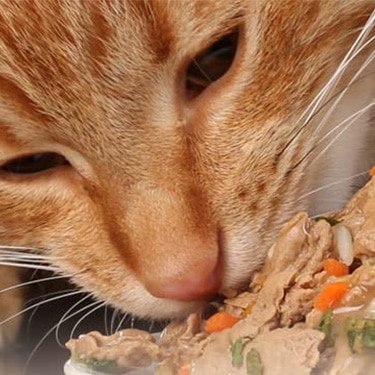
-
Find the right food for your petTake this quiz to see which food may be the best for your furry friend.Find the right food for your petTake this quiz to see which food may be the best for your furry friend.Featured products
 Hill's Science Diet Adult Chicken & Beef Entrée Dog Food
Hill's Science Diet Adult Chicken & Beef Entrée Dog FoodChicken & Beef Entrée in a delicious loaf with complete & balanced nutrition to help keep adult dogs active and healthy
Shop Now Adult Chicken & Barley Recipe Dog Food
Adult Chicken & Barley Recipe Dog FoodSupports lean muscle and beautiful coat for adult dogs
Shop Now Adult Large Breed Chicken & Barley Recipe Dog Food
Adult Large Breed Chicken & Barley Recipe Dog FoodSupports healthy joints, lean muscle, and beautiful coat for large breed dogs
Shop NowFeatured products Senior Vitality Adult 7+ Tuna & Vegetables Stew
Senior Vitality Adult 7+ Tuna & Vegetables StewImproves Everyday Ability to Get Up & Go
Shop Now Adult Turkey & Liver Entrée Cat Food
Adult Turkey & Liver Entrée Cat FoodPrecisely balanced nutrition with the delicious taste of minced turkey & liver to help fuel the energy needs of cats during the prime of their life
Shop Now Adult Tender No Corn, Wheat, Soy Chicken & Vegetables Stew Cat FoodShop Now
Adult Tender No Corn, Wheat, Soy Chicken & Vegetables Stew Cat FoodShop Now -
Dog
- Dog Tips & Articles
-
Health Category
- Weight
- Food & Environmental Sensitivities
- Urinary
- Digestive
- Joint
- Kidney
-
Life Stage
- Puppy Nutrition
- Adult Nutrition
- Senior Nutrition
Cat- Cat Tips & Articles
-
Health Category
- Weight
- Skin & Food Sensitivities
- Urinary
- Digestive
- Kidney
-
Life Stage
- Kitten Nutrition
- Adult Nutrition
Featured articles How to Properly Mix Wet & Dry Pet Foods
How to Properly Mix Wet & Dry Pet FoodsAn Orange cat eating from a bowl filled with mixed food
Read More The Science Behind Our Love for Pets
The Science Behind Our Love for PetsLearn the scientific reasons why we have such strong connections with our pets, and what science says about the love between humans and our furry friends.
Read More What Is Littermate Syndrome? Pet Adoption Guide
What Is Littermate Syndrome? Pet Adoption GuideLearn more about littermate syndrome in dogs and cats and how to successfully navigate adoption and early socialization processes.
Read More -


Your dog's missing. Though this is an upsetting situation, it's important for you to not panic. In many of these cases, dogs who don't come home on their own get picked up by good Samaritans who just want to reunite the pup with their family. As a dog parent, you'll want to make this process as easy as possible.
Here are some tips on how to do just that, as well as how to find a lost dog, how to prevent your dog from getting lost in the first place and what to do with a lost dog if you find one.
My Dog is Missing or Lost: What Should I Do?
FidoFinder. Check closets, basements and cellars. Look under beds, porches and crawl spaces. Don't rule out any places; dogs can get into almost anything and anywhere if they're determined enough.
Gather Search Tools
It's tempting to immediately start searching for your dog if they've left your property, but you'll want to gather a few tools first. Consider items that'll make your search easier, such as photos of your pup to show others, a flashlight to peer into bushes, and a whistle or squeaky toy to get your dog's attention. Bringing a treat with a powerful smell or a familiar sound can also lure your dog back to you.
Ponder How They Escaped
Did someone leave the gate open? Did your pup bolt out the front door after a cat? Did they dig under the fence to visit a buddy down the street? Determining how and why your dog may have escaped can shed light on what they were thinking when they went missing, says Petfinder. This can help you assess whether they're exploring the neighborhood or if they've gone somewhere to hide, which allows you to begin your search on the right foot.
Search Your Neighborhood
Comb through the areas your pup's likely gone and, if possible, enlist help to cover more ground. Search by car and on foot, calling out their name, and have someone stay behind in case your dog returns. Ask everyone you encounter to keep an eye out for your pup, showing them your dog's photo for reference.
Flag Your Dog's Microchip
If your pet is microchipped and registered with a database, alert the organization maintaining the database that your dog's gone missing as soon as possible. If your dog was stolen, this can let any veterinarians or groomers know that your pup is not with their family. For this reason, it is important to always make sure your pet's microchip information is up to date, including your current address and contact information.
Create and Distribute Fliers
Even in the digital age, physical lost dog posters are still one of the most effective way to find a pup, says FidoFinder. Your flier should include:
- A heading saying "lost dog" in large, bold letters.
- A clear and current picture of your dog.
- The best way to contact you.
Offer a reward if you can. This provides an incentive for people to look for your pup and to return them safely, instead of keeping your cute pet for themselves. Post fliers around your neighborhood and distribute them to animal shelters, vet clinics and groomers — anywhere someone would take a lost dog.
Use Social Media
Viral social media posts can be effective for reuniting dogs with their pet parents. Include a photo and the same information as in your flier when posting, as well as where your pup went missing. Share your post in neighborhood groups and lost dog groups, asking your social network to do the same.
Contact Animal Shelters
It may be difficult for shelter workers to identify a dog based on a description given over the phone, so your best bet is visiting shelters in person to see if your pet was received. Ask to see the dogs they've recently taken in, leaving a flier so they can call you if your pup shows up. Many shelters also have the ability to look up a dog's information from their microchip, so let them know if your dog is chipped to make it easier to identify them if they get brought in.
Use the Classifieds
Online classifieds and those in your local newspaper can be an effective way to locate your dog. Besides taking out an ad about your missing pup, be sure to regularly check the found section to see if someone has your dog.
Enlist a Pet Finder Organization
These can be especially helpful if you lose your dog away from home or while traveling. When you can't remain in one place to look for your dog, these organizations can keep the search going for you.


Tasty Tips
How to Prevent Your Dog From Getting Lost

Reinforcing fencing is one of the best ways to prevent your dog from running away. Block off areas where your pup can dig under the fence, close any gaps they can squeeze through and extend fences so that they can't easily jump or climb over them. Move dog houses, picnic tables and other objects your pup climbs to ascend the fence.
Additionally, training your dog to not dig, as well as to stay in your yard are good reinforcement behaviors to help keep them there. Even if you have a fenced in yard, it is a good idea to check on your dog every few minutes to make sure they are still just playing or taking a dog nap outside. This is particularly important if your dog has escaped in the past.
Other ways to prevent your dog from getting lost include:
Using indoor pet gates. Before opening external doors, place your dog behind a gate to prevent them from bolting.
Not leaving them in unattended cars. This eliminates the likelihood of them squeezing through a cracked window or catching the eye of a dognapper.
Keeping them on a leash. Though this is especially important when you're away from home, it can also be crucial in your own backyard. If you can't trust your pup to remain inside the fence, it's best to take them out on a leash to prevent any escapes.
Having your dog wear a collar with their ID, vaccination tags and your current contact information helps to ensure they'll be returned quickly if they go missing. Microchipping your dog and registering them with a database can also help with safe returns. If you're particularly worried about your dog getting out, consider purchasing a GPS collar or collar attachment. These devices will allow you to track your dog's whereabouts at anytime just to help keep them safe.
What to Do With a Lost Dog
If you're a good Samaritan looking to return a lost dog to their home, here are some quick steps you can take:
- Check for tags. Look for an ID with their pet parent's contact information. If you come up short, check to see if they have a rabies vaccination tag. This way, you can contact the vet listed on the tag, who can put you in touch with their family.
- Talk to your neighbors. Chances are, they may recognize the dog and be able to point you in the direction of their home.
- Visit a vet. Not only can they scan the dog for a microchip, but they may have already received calls about a lost pup matching this one's description.
- Pay attention to lost pet fliers. Really look at the fliers posted around your neighborhood, studying the photos and pet descriptions. You may find that someone's already looking for the pup you've found.
- Check classifieds and social media. Post pictures of the dog in neighborhood social groups, to let everyone know you've found them and that you're looking for their family.
- Take them to a local animal shelter. This is one of the first places their pet parent's likely to check. You can call ahead first and ask if anyone has called them to check-in.
By remaining calm and following these steps for how to find a lost dog, you'll be in the best position to locate your pup. Be patient, though, as tracking down a lost pet takes time and persistence. For more extensive help on what to do, check our full article.


Jean Marie Bauhaus is a pet parent, pet blogger, and novelist from Tulsa, Oklahoma, where she usually writes under the supervision of a lapful of fur babies.
Related products

Supports healthy joints, lean muscle, and beautiful coat for large breed dogs

Chicken & Beef Entrée in a delicious loaf with complete & balanced nutrition to help keep adult dogs active and healthy

Chicken & Barley Entrée in a delicious loaf with great taste and precisely balanced nutrition to support 5 essential building blocks for lifelong health

Supports lean muscle and beautiful coat for adult dogs
Related articles

Your dog's coat and skin are a big part of your dog's overall health. Ensure you keep your dog's coat healthy, by following these simple tips.

Wondering where can I buy a dog? Consider adoption and explore the pros and cons of adopting a dog from a breeder versus an animal shelter.

Learn how to help keep your dog's immune system in tip-top shape, including nutritional immune system support for dogs and other strategies.

Discover how the field of dog science is giving us more and more insights into the inner workings of our furry best friends.

Put your dog on a diet without them knowing
Our low calorie formula helps you control your dog's weight. It's packed with high-quality protein for building lean muscles, and made with purposeful ingredients for a flavorful, nutritious meal. Clinically proven antioxidants, Vitamin C+E, help promote a healthy immune system.
Put your dog on a diet without them knowing
Our low calorie formula helps you control your dog's weight. It's packed with high-quality protein for building lean muscles, and made with purposeful ingredients for a flavorful, nutritious meal. Clinically proven antioxidants, Vitamin C+E, help promote a healthy immune system.

